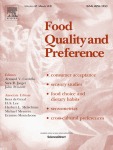How do different warning signs compare with the guideline daily amount and traffic-light system?
Dublin Core
Título
How do different warning signs compare with the guideline daily amount and traffic-light system?
Tema
ALIMENTOS
NUTRICION
INFORMACION NUTRICIONAL
NUTRICION-ADVERTENCIAS
BIBLIOGRAFIA NACIONAL QUIMICA
Abstract
Nutritional warnings are rapidly gaining relevance, particularly in the region of the Americas, as a front-of-package nutrition labelling scheme that facilitate the identification of products with high content of nutrients associated with non-communicable diseases (NCDs). Several graphic designs are being developed as countries discuss the implementation of nutritional warnings, which makes it necessary to develop research to evaluate their efficacy. In this context, the aim of the present work was to compare the efficacy of a series of nutritional warnings that are being considered by Brazilian national authorities for the country with two of the most studied schemes: the guidelines daily amounts (GDA) and the traffic light system. Two studies were conducted. In the first one, visual search was conducted with 62 participants to evaluate the time needed by them to identify the schemes on food labels and to identify whether a product had high nutrient content. In the second study, an online survey with 1932 participants was used to evaluate their ability to use FOP nutrition labelling schemes to correctly identify the most healthful product in a set, as well as high nutrient content in a product. In addition, the influence of FOP nutrition labelling schemes on perceived healthfulness was evaluated. Finally, consumers’ perception of the schemes was gathered using an open-ended question. Results confirmed the advantages of nutritional warnings compared to the GDA and the traffic-light system to facilitate the identification of products with high content of nutrients associated with NCDs. In addition, the use of familiar signs frequently used to convey a ‘warning message’ outperformed other unfamiliar signs in terms of their ability to facilitate the interpretation of nutrition information. Regarding colour, black signs tended to required significantly less time to be detected when included on colour food labels compared to red
Autor
Deliza, Rosires
de Alcantara, Marcela
Pereira, Renata
Ares, Gastón
Fuente
Food Quality and Preference v. 80, 2020. -- p. 1-12. --e103821
Editor
Elsevier
Fecha
2020
Derechos
Información sobre Derechos de Autor (Por favor lea este aviso antes de abrir los documentos u objetos)La legislación uruguaya protege el derecho de autor sobre toda creación literaria, científica o artística, tanto en lo que tiene que ver con sus derechos morales, como en lo referente a los derechos patrimoniales con sujeción a lo establecido por el derecho común y las siguientes leyes (LEY 9.739 DE 17 DE DICIEMBRE DE 1937 SOBRE PROPIEDAD LITERARIA Y ARTISTICA CON LAS MODIFICACIONES INTRODUCIDAS POR LA LEY DE DERECHO DE AUTOR Y DERECHOS CONEXOS No. 17.616 DE 10 DE ENERO DE 2003, LEY 17.805 DE 26 DE AGOSTO DE 2004, LEY 18.046 DE 24 DE OCTUBRE DE 2006 LEY 18.046 DE 24 DE OCTUBRE DE 2006) ADVERTENCIA - La consulta de este documento queda condicionada a la aceptación de las siguientes condiciones de uso: Este documento es únicamente para usos privados enmarcados en actividades de investigación y docencia. No se autoriza su reproducción con fines de lucro. Esta reserva de derechos afecta tanto los datos del documento como a sus contenidos. En la utilización o cita de partes debe indicarse el nombre de la persona autora.
Formato
PDF
Idioma
Inglés
Tipo
Artículo
Identificador
DOI: 10.1016/j.foodqual.2019.103821
Document Item Type Metadata
Original Format
Pdf
- Fecha de agregación
- May 7, 2020
- Colección
- Bibliografía Nacional Química
- Tipo de Elemento
- Document
- Etiquetas
- Alimentos, Información nutricional, Nutrición, Nutrición Advertencias
- Citación
- Deliza, Rosires, “How do different warning signs compare with the guideline daily amount and traffic-light system?,” RIQUIM - Repositorio Institucional de la Facultad de Química - UdelaR, accessed August 25, 2024, https://riquim.fq.edu.uy/items/show/6034.
- Archivos

